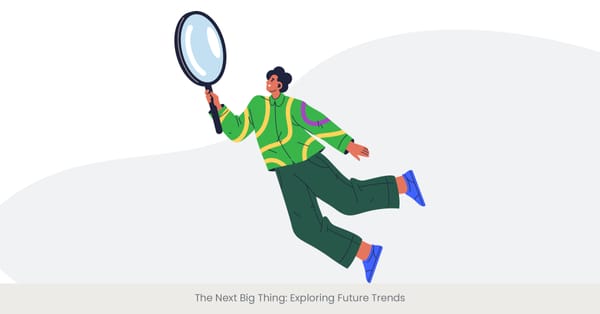
Eco-Friendly Materials for In-Person Presentation Handouts
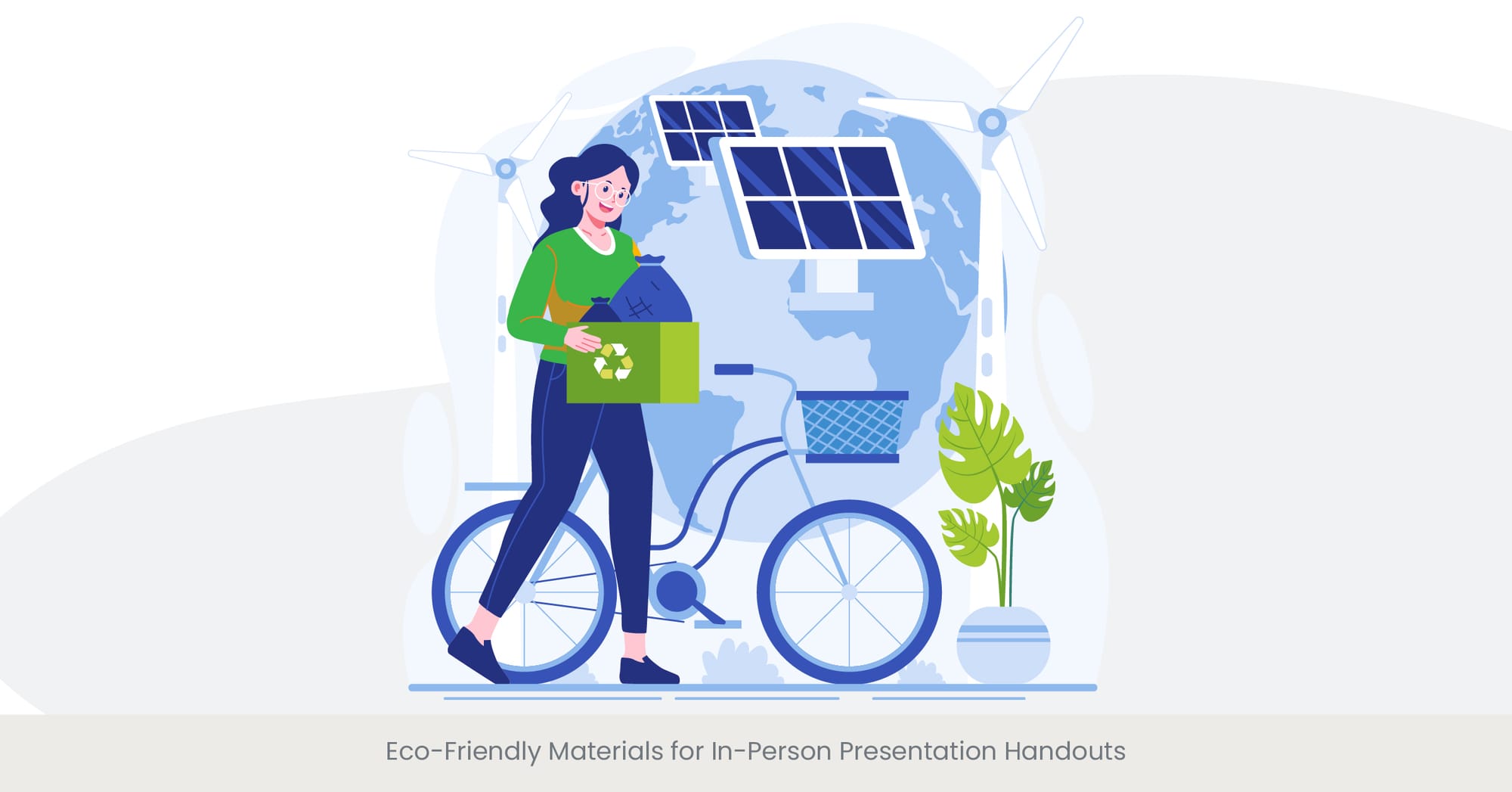
Embracing Eco-Friendly Materials for Presentations
In today’s environmentally conscious world, using eco-friendly materials for in-person presentation handouts is a crucial step towards sustainability. Traditional handouts often result in significant paper waste and contribute to environmental degradation. By choosing sustainable alternatives, presenters can reduce their carbon footprint and promote a more eco-conscious event. This shift not only benefits the environment but also aligns with the growing consumer preference for environmentally friendly practices. Engaging product presentation scripts that focus on sustainability can help companies communicate their green initiatives effectively, showcasing their commitment to both innovation and eco-conscious practices.
Background and Importance of Eco-Friendly Materials
Eco-friendly materials are those that have a minimal impact on the environment throughout their lifecycle. This includes recycled paper, biodegradable products, and sustainably sourced materials. The design process for these materials often emphasizes reducing carbon emissions and promoting recycling. Traditional printed materials contribute to deforestation, water pollution, and increased carbon emissions. Switching to eco-friendly options helps mitigate these negative effects and supports a sustainable approach to presentation design. In product demos, visual communication in product demos can emphasize the benefits of these eco-friendly materials, creating a lasting impact.
Real-World Examples and Applications
A notable example of using eco-friendly materials in presentations is the tech giant Apple. During their product launches, Apple uses recycled paper and soy-based inks for all printed materials, significantly reducing their environmental footprint. Similarly, Patagonia, an outdoor clothing brand, uses 100% recycled paper for their catalogs and presentation handouts. These companies demonstrate how integrating eco-friendly practices into your presentation strategy can effectively reduce paper waste and promote sustainability. By following their lead, businesses can create impactful presentations that align with their environmental values, and utilize product presentation structure templates to convey this message in a clear, engaging format.
Research and References Supporting Eco-Friendly Practices
Research from the Environmental Paper Network indicates that using recycled paper can reduce energy consumption by 40% and water usage by 50%. According to a study by the World Wildlife Fund, every ton of recycled paper used can save 17 trees, 380 gallons of oil, and 7,000 gallons of water. Additionally, data from the Carbon Trust shows that the carbon footprint created by recycled paper is significantly lower than that created by virgin paper. These statistics underscore the importance of adopting eco-friendly materials for in-person presentations, highlighting the tangible benefits of reducing paper waste and promoting sustainable practices. Public speaking tips for product demos can also emphasize these benefits, helping to highlight the environmental impact while engaging the audience with compelling facts.
Minimizing Carbon Footprint in Virtual Presentation Technologies
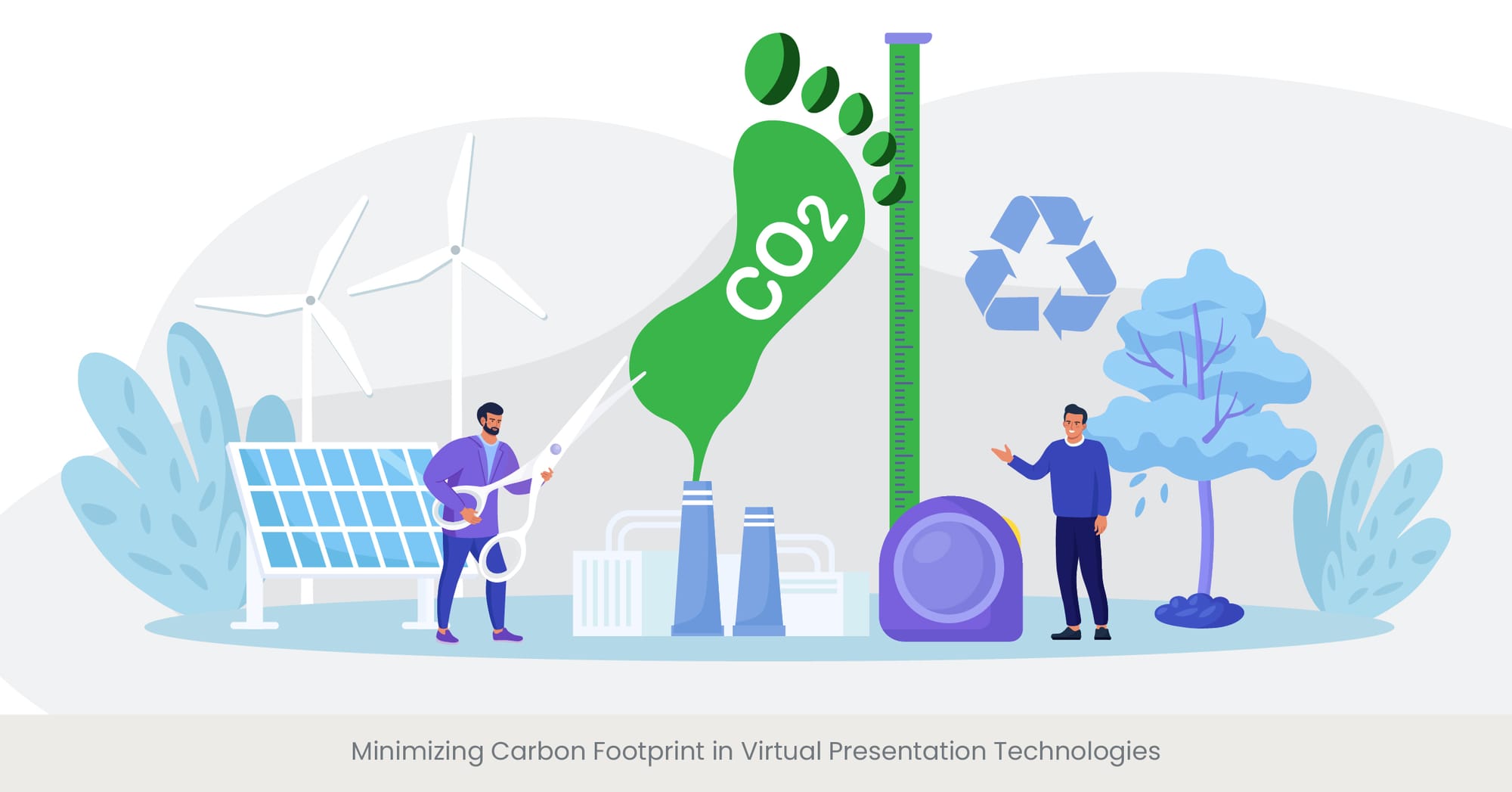
Reducing Carbon Footprint with Virtual Presentations
The rise of virtual presentation technologies presents an opportunity to minimize the carbon footprint associated with traditional in-person events. Virtual presentations eliminate the need for travel, reducing carbon emissions significantly. However, it's essential to consider the environmental impact of digital technologies as well. By learning and optimizing the use of virtual presentation tools and adopting sustainable practices, companies can further reduce their carbon footprint and promote eco-friendly ideas through product design case study presentations.
Understanding the Environmental Impact of Digital Technologies
While virtual presentations offer clear benefits over traditional methods, they still consume energy and resources. Data centers, which power virtual platforms, contribute to carbon emissions through their significant energy usage. To address this, many companies are investing in energy-efficient technologies and renewable energy sources. Reducing the whole team' carbon footprint involves understanding and mitigating the environmental impact of digital operations, from the design process of the software to the electricity used during presentations.
Real-World Examples and Applications
Companies like Google and Microsoft have made significant strides in minimizing their carbon footprint. Google has been carbon-neutral since 2007 and aims to operate entirely on carbon-free energy by 2030. They achieve this by optimizing their data centers for energy efficiency and using renewable energy sources. Microsoft, on the other hand, has committed to becoming carbon negative by 2030. They utilize cloud-based solutions to host virtual presentations, reducing the need for physical travel and printed materials. By incorporating eco-friendly practices into their presentation strategy, these companies set an example for others to follow.
Access free INK PPT templates for eco-friendly presentations.
Direct readers to download free templates designed with sustainability in mind, helping them create greener presentations.
Research and References Supporting Sustainable Virtual Presentations
According to a report by the International Energy Agency (IEA), improving data center efficiency could reduce energy consumption by up to 40%. A study by the World Economic Forum found that digital technologies, including virtual presentations, can reduce global emissions by up to 15% by 2030. Additionally, research from McKinsey & Company highlights that companies adopting virtual technologies can significantly lower their carbon footprint compared to traditional in-person events. These findings emphasize the importance of optimizing virtual presentation technologies to minimize environmental impact and promote sustainability.
Promoting Sustainability Through Presentation Content
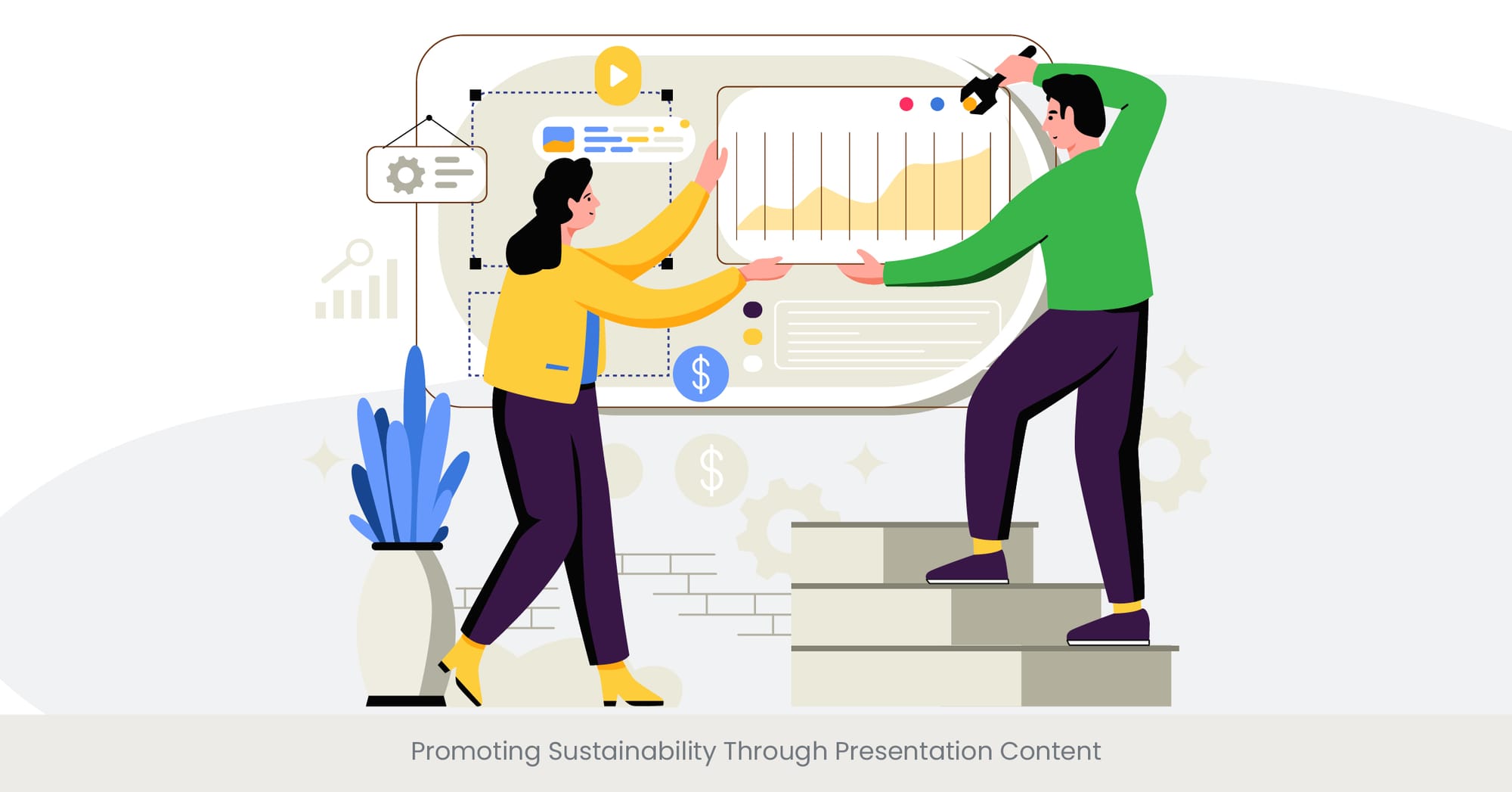
Integrating Sustainability into Presentation Content
Promoting sustainability through presentation content is a powerful way to raise awareness and encourage eco-friendly practices. By incorporating themes of environmental responsibility and sustainability into the content, presenters can educate their audience and inspire action. This approach not only highlights the company’s commitment to sustainability but also aligns with the growing consumer demand for environmentally conscious practices. It is an effective strategy for making a luxury product presentation resonate with eco-conscious audiences.
Background on Sustainable Presentation Content
Sustainable presentation content involves including information on eco-friendly practices, highlighting sustainable products, and showcasing the company’s environmental initiatives. The design process for such content often includes using visuals and data to illustrate the impact of sustainability efforts. This approach can be traced back to the increasing global focus on sustainability and the recognition of the environmental impacts of business operations. By promoting sustainability through presentation content, companies can demonstrate their commitment to reducing their environmental footprint and supporting sustainable development goals.
Real-World Examples and Applications
A notable example is Unilever’s sustainability presentations, which highlight their commitment to reducing carbon emissions, promoting sustainable sourcing, and minimizing waste. They use compelling visuals and data to illustrate their progress and future goals. Another example is Tesla’s product design case study presentations, where they emphasize their electric vehicles' role in reducing carbon emissions and their innovative approaches to sustainability. These presentations not only showcase their products but also reinforce their brand and team's commitment to a sustainable future. For other companies, integrating similar strategies can enhance their brand image and encourage eco-friendly ideas and practices.
Research and References Supporting Sustainable Presentation Content
Research from the Harvard Business Review indicates that companies promoting sustainability can increase consumer trust and loyalty by up to 58%. A study by Nielsen found that 81% of global consumers feel strongly that companies should help improve the environment. Additionally, data from the Global Reporting Initiative (GRI) shows that sustainability reporting can enhance corporate transparency and stakeholder and community engagement. These findings underscore the importance of promoting sustainability through presentation content, highlighting the positive impact on both the environment, community, and business success.
Digital Alternatives to Traditional Presentation Media
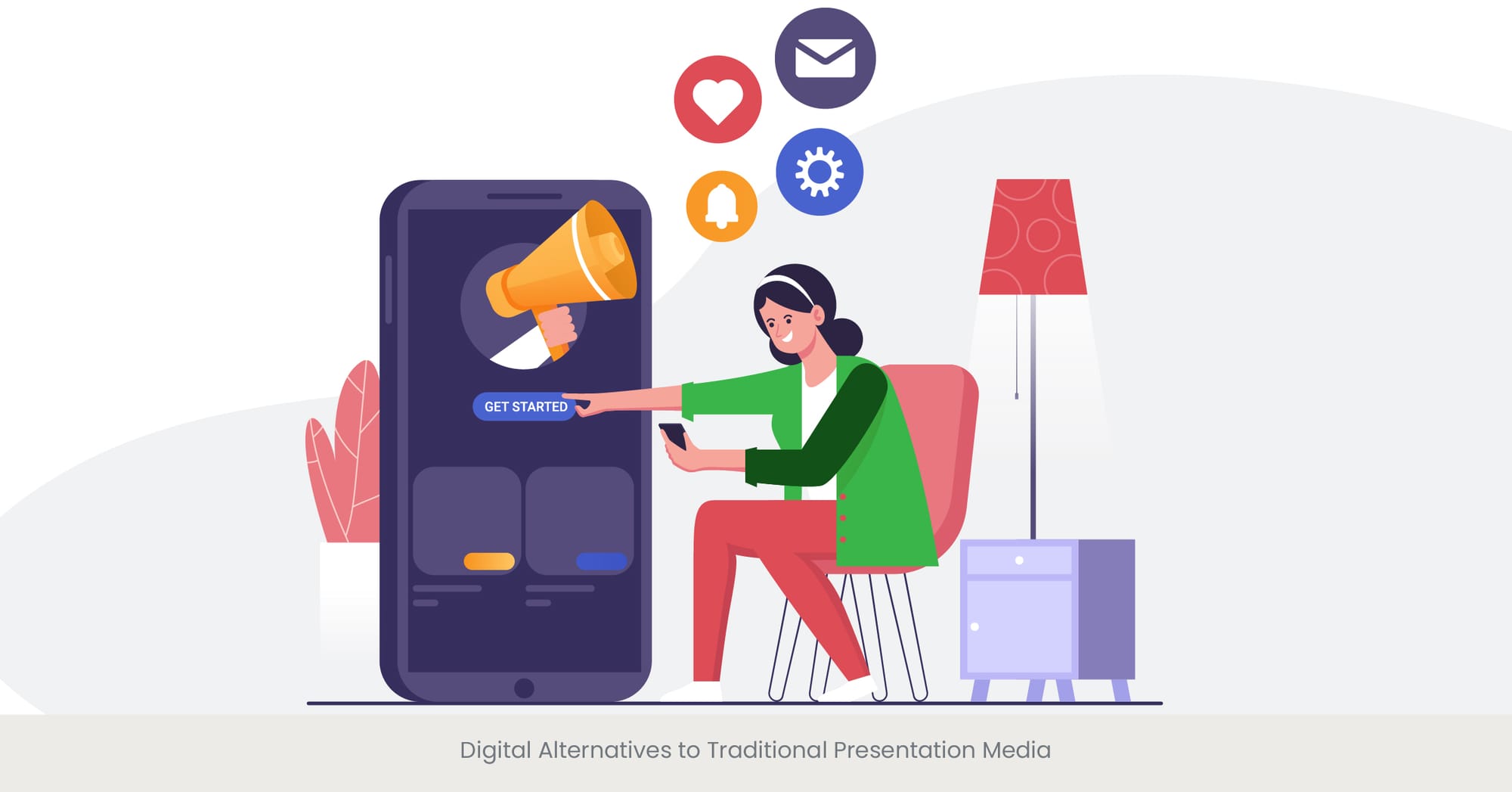
Embracing Digital Solutions for Sustainability
In today's eco-conscious business environment, digital alternatives to traditional presentation media are becoming indispensable. These alternatives help companies significantly reduce their environmental footprint by shifting from printed materials to digital formats. Incorporating digital alternatives into your product presentation structure templates not only minimizes paper waste but also enhances interactivity and accessibility. It's a great strategy to integrate into your presentation coaching for sales teams to promote sustainability while delivering impactful presentations.
Background on Digital Presentation Media
Digital presentation media includes tools like PowerPoint, Prezi, and Google Slides, allowing users to deliver presentations electronically. These platforms have evolved, offering features such as real-time collaboration, multimedia integration, and cloud storage. Leveraging digital alternatives to traditional methods is a critical step in making presentations eco-friendly. Additionally, using product presentation structure templates within these tools can help streamline the presentation creation process, ensuring that your public speaking tips for product demos are well-supported by sustainable practices.
Real-World Examples and Applications
Companies like Adobe and Cisco have embraced digital alternatives to traditional presentation media by hosting digital events and reducing printed materials. These companies use product presentation structure templates to create cohesive, well-structured presentations. This shift not only saves costs but also aligns with their commitment to sustainability. Incorporating digital alternatives into your strategy can enhance your visual communication in product demos, ensuring both efficiency and eco-friendliness.
Research and References Supporting Digital Alternatives
Research from the Environmental Paper Network shows that companies adopting digital alternatives to traditional presentation media can reduce their paper waste by up to 90%. Studies by IDC also highlight that using digital presentation tools improves overall efficiency, aligning with eco-conscious goals. Implementing product presentation structure templates into your strategy is an excellent way to maximize the impact of your public speaking tips for product demos while reducing environmental harm.
Implementing Green Practices in Event Planning
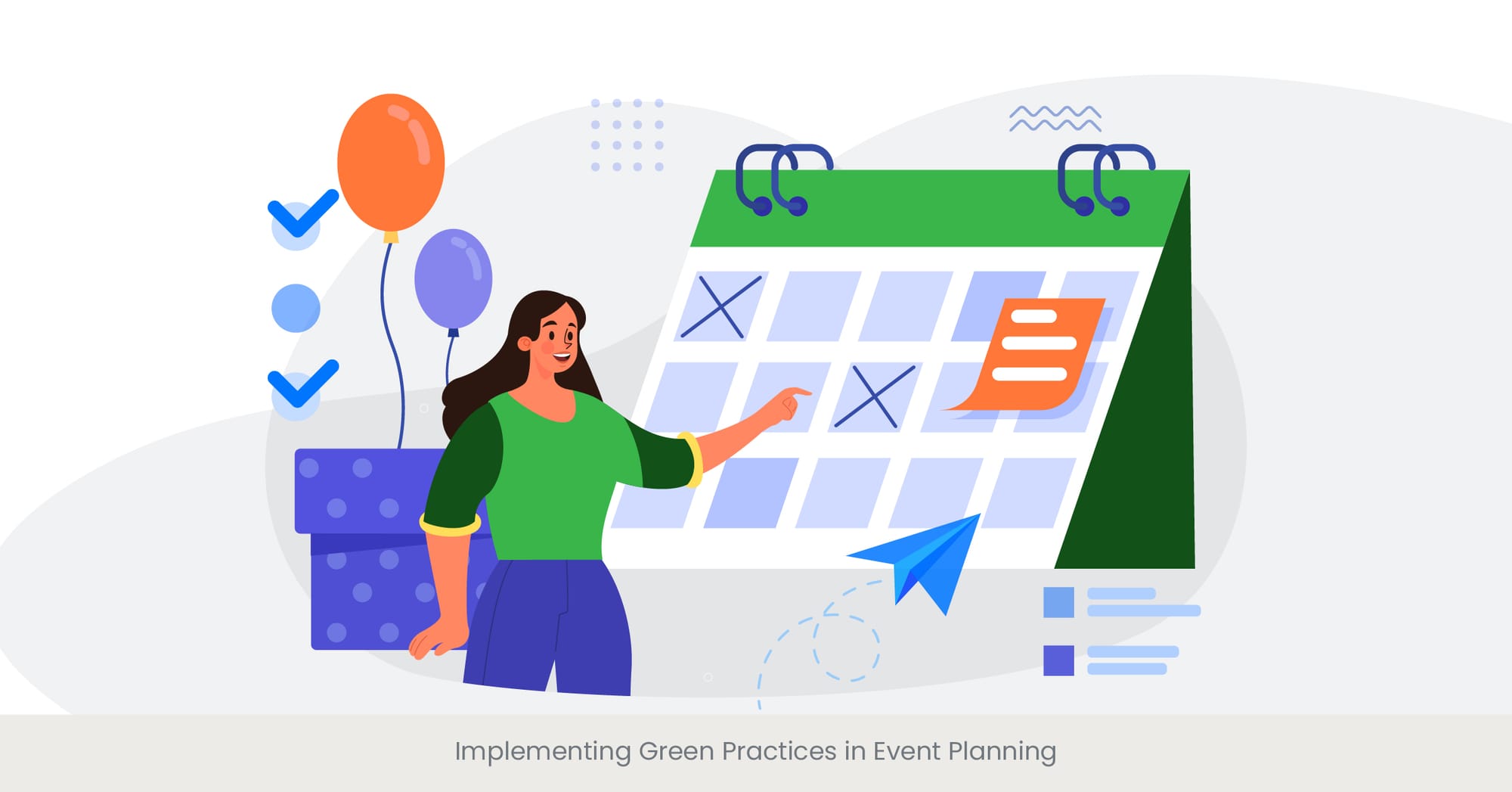
Green Practices for Sustainable Events
The demand for green practices in event planning is rising as companies seek to reduce their carbon footprints. Adopting eco-friendly methods such as digital registrations and using digital alternatives to traditional presentation media minimizes waste. Additionally, incorporating visual communication in product demos ensures that presentations remain compelling without the need for printed materials. By integrating these practices, companies can enhance their presentation coaching for sales while emphasizing sustainability.
Background and Key Green Practices
Key green practices include using digital invitations, selecting venues with eco-certifications, and choosing energy-efficient equipment. Using product presentation structure templates in your planning helps standardize presentations, making them efficient and eco-friendly. Emphasizing public speaking tips for product demos within this green framework ensures that presentations are impactful, all while promoting environmental responsibility.
Real-World Examples and Applications
Google’s I/O conference is a leading example of green practices in action, offering a model for how companies can integrate digital alternatives to traditional presentation media and still deliver a highly engaging experience. They use product presentation structure templates for uniformity and reduce their reliance on printed materials by adopting visual communication in product demos.
Research and References Supporting Green Event Planning
Research shows that incorporating green practices can reduce event waste by up to 90%. Additionally, event planners increasingly see the value in using digital alternatives for presentations, supported by public speaking tips for product demos that ensure sustainability and effectiveness go hand-in-hand.
Energy-Efficient Presentation Technologies
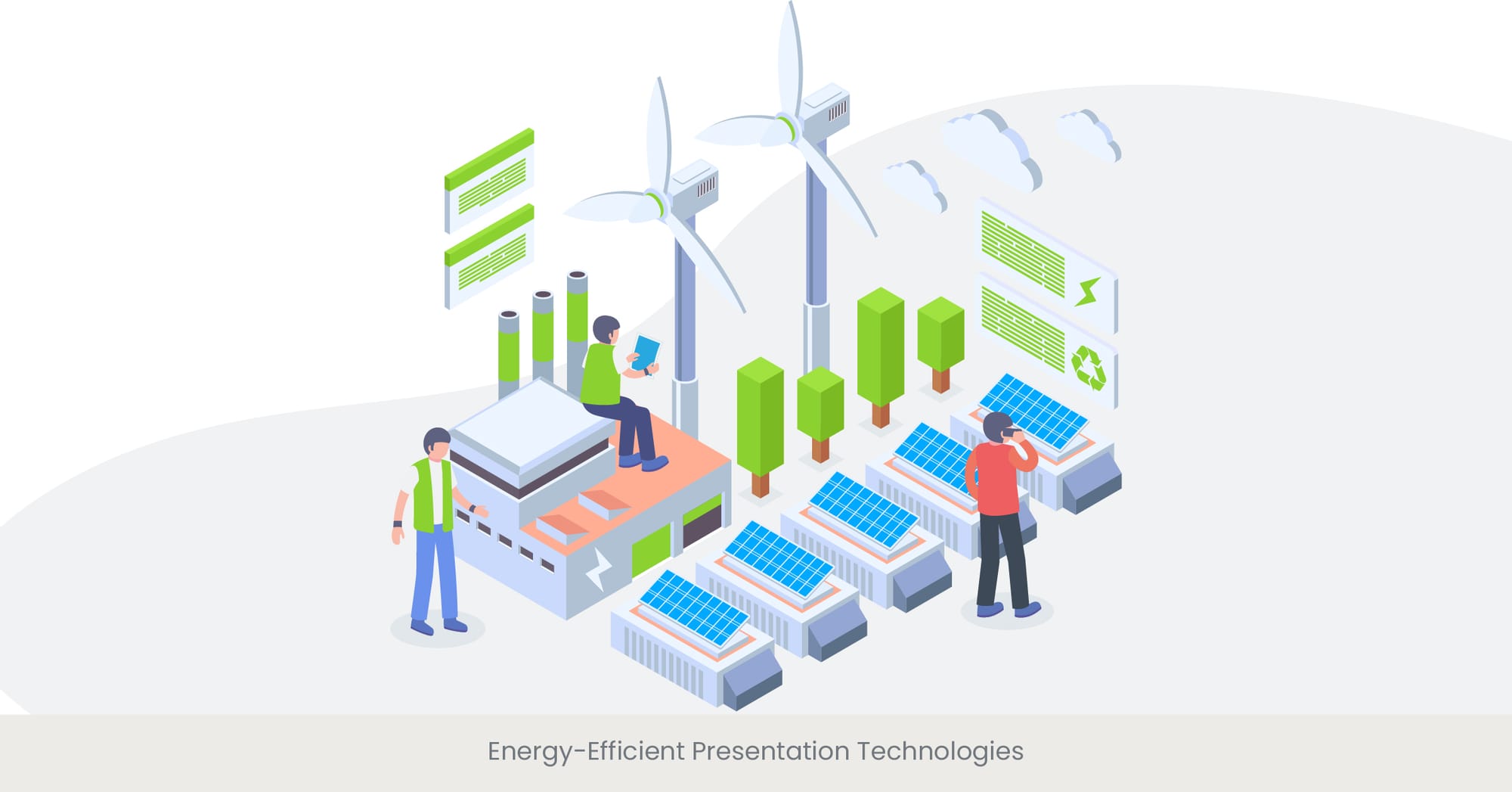
Advancing Sustainability with Energy-Efficient Technologies
Energy-efficient technologies such as LED projectors and low-power devices are essential for reducing energy consumption during presentations. By integrating these technologies into your product presentation structure templates, companies can not only reduce their energy use but also ensure their presentations are impactful. Moreover, adopting these technologies is key to promoting sustainability in visual communication in product demos.
Background and Development of Energy-Efficient Technologies
Energy-efficient technologies have come a long way, driven by advancements in LED technology and energy-saving computing devices. Using these innovations with digital alternatives to traditional presentation media provides businesses with a dual benefit: reducing their environmental impact and maintaining high-quality presentations. By aligning these with your presentation coaching for sales teams, companies can deliver dynamic, eco-friendly presentations that resonate with audiences.
Real-World Examples and Applications
Companies like Epson offer LED projectors that use up to 70% less energy, enhancing the sustainability of product presentation structure templates. Apple’s energy-efficient MacBook lineup is another excellent example of using low-power devices to minimize environmental impact. Integrating energy-efficient technologies into visual communication in product demos ensures that presentations not only look great but are also eco-friendly.
Research and References Supporting Energy-Efficient Technologies
The U.S. Department of Energy has found that energy-efficient lighting and computing devices can reduce energy consumption by up to 75%. Combining these technologies with digital alternatives and public speaking tips for product demos helps organizations maintain effective, engaging, and environmentally responsible presentations.
Sustainable Branding Through Presentation Practices
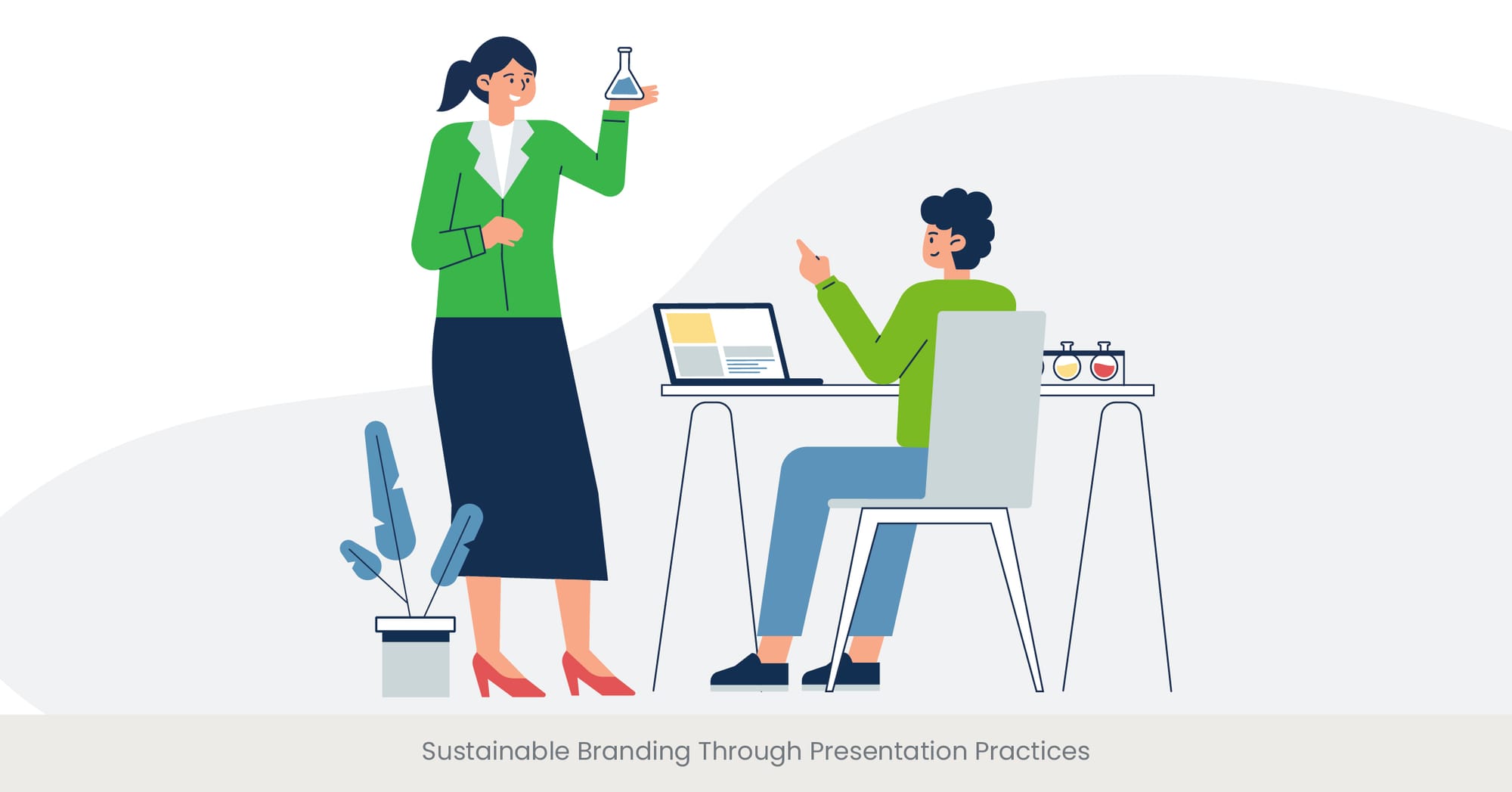
Building a Sustainable Brand Image
Incorporating sustainability into your branding via digital alternatives to traditional presentation media can elevate your company's image. By showcasing your commitment to eco-friendly practices through product presentation structure templates, you can connect with eco-conscious audiences while minimizing your environmental footprint. This approach not only enhances your visual communication in product demos but also builds lasting consumer loyalty.
Understanding Sustainable Branding
Sustainable branding involves incorporating environmental responsibility into every aspect of your business. Using green practices, such as energy-efficient technologies and digital alternatives, companies can communicate their values effectively. Pairing these with presentation coaching for sales ensures that your team delivers messages aligned with your sustainability goals.
Real-World Examples and Applications
Patagonia’s commitment to environmental activism makes them a leading example of sustainable branding. Their use of digital alternatives to traditional presentation media and sustainable visual communication in product demos showcases how eco-friendly practices can strengthen brand loyalty. Following suit, other companies can integrate these principles into their presentations using product presentation structure templates to enhance their green credentials.
Research and References Supporting Sustainable Branding
Studies show that 73% of global consumers are willing to pay more for sustainable brands. Using digital alternatives and energy-efficient technologies within your product presentation structure templates can help create a powerful sustainable branding strategy. Incorporating public speaking tips for product demos into this framework ensures that your brand’s commitment to sustainability is effectively communicated.
Waste Reduction Strategies for Large Events
Implementing Effective Waste Reduction Strategies
Large events, such as conferences and trade shows, often generate significant waste, which can negatively impact the environment. Implementing effective waste reduction strategies is crucial for promoting sustainability and reducing environmental harm. By integrating visual communication in product demos, event organizers and designers can minimize waste, conserve resources, and show a commitment to eco-friendly practices. These strategies enhance event sustainability and meet the expectations of eco-conscious attendees, leading to more successful, engaging product presentation scripts.
Key Waste Reduction Strategies
Event planners can minimize single-use plastics, implement comprehensive recycling programs, and transition to digital alternatives to printed materials. Encouraging attendees to bring reusable items like water bottles and tote bags, and providing clearly labeled recycling bins throughout the venue, is essential. Offering product presentation structure templates can also reduce printed handouts. Moreover, selecting caterers who prioritize locally sourced, sustainable food options can significantly reduce food waste. These strategies contribute to an overall reduction in the event's environmental footprint and promote a more sustainable approach to event planning, aligned with public speaking tips for product demos that emphasize eco-conscious practices.
This prompt can encourage readers to reach out for customized, sustainable solutions to reduce the environmental impact of their events and presentations.
Real-World Examples and Applications
The South by Southwest (SXSW) conference successfully implements waste reduction strategies by using digital ticketing and event guides to minimize paper waste. Additionally, the event features extensive recycling and composting options. Salesforce’s Dreamforce event emphasizes waste reduction by offering biodegradable materials and water refill stations while ensuring promotional materials are eco-friendly. Events like these also use presentation coaching for sales to ensure effective and sustainable messaging. By following these practices, large events can incorporate waste reduction strategies and set an example for others to follow.
Research and References Supporting Waste Reduction
According to the Green Meeting Industry Council, events that adopt waste reduction strategies can decrease their overall waste by up to 90%. The Environmental Protection Agency (EPA) found that recycling and composting can reduce waste by up to 75%. Research from the International Congress and Convention Association (ICCA) shows that sustainable event practices enhance attendee satisfaction and improve event reputation, supporting public speaking tips for product demos that focus on environmental responsibility. These findings highlight the importance of waste reduction strategies for large events and their role in promoting sustainability.
Educating Audiences on Sustainability Issues

The Importance of Sustainability Education in Presentations
Sustainability education is a crucial aspect of modern presentations, particularly in product presentation structure templates. By educating audiences about environmental responsibility and sustainable practices, presenters can raise awareness and inspire action. This approach aligns with growing eco-consciousness in both personal and professional spaces. Engaging product presentation scripts that incorporate sustainability resonate more deeply with audiences, increasing engagement and retention. Companies that focus on sustainability education demonstrate a commitment to eco-friendly values, adding depth to public speaking tips for product demos.
Background on Sustainability Education
Sustainability education covers a wide range of topics, including climate change, waste reduction, and renewable energy. It equips audiences with the knowledge and tools to adopt sustainable practices, ensuring a stronger connection between content and eco-friendly initiatives. When integrated into presentation coaching for sales, sustainability education enhances the overall impact of the presentation, especially in sectors like business and marketing.
Real-World Examples and Applications
The Ellen MacArthur Foundation excels in using visual communication in product demos to promote the circular economy. Their presentations showcase how sustainability can lead to economic and environmental benefits. Similarly, the United Nations’ presentations on Sustainable Development Goals (SDGs) provide a clear framework for addressing global challenges such as climate change. These examples show how sustainability education enhances engaging product presentation scripts and helps promote eco-friendly practices.
Research and References Supporting Sustainability Education
The National Environmental Education Foundation (NEEF) found that sustainability education can significantly increase environmental awareness and promote behavior change. Presentations that incorporate public speaking tips for product demos focused on sustainability see up to 50% higher audience engagement and retention, according to the Center for Research on Environmental Decisions (CRED). Companies that integrate sustainability education into their presentation coaching for sales often report improvements in brand image and customer loyalty, further highlighting its value.
Read INK PPT’s case studies on impactful sustainability presentations.
By sharing case studies, readers can see how INK PPT effectively integrates sustainability into impactful presentations.
Measuring the Environmental Impact of Presentations
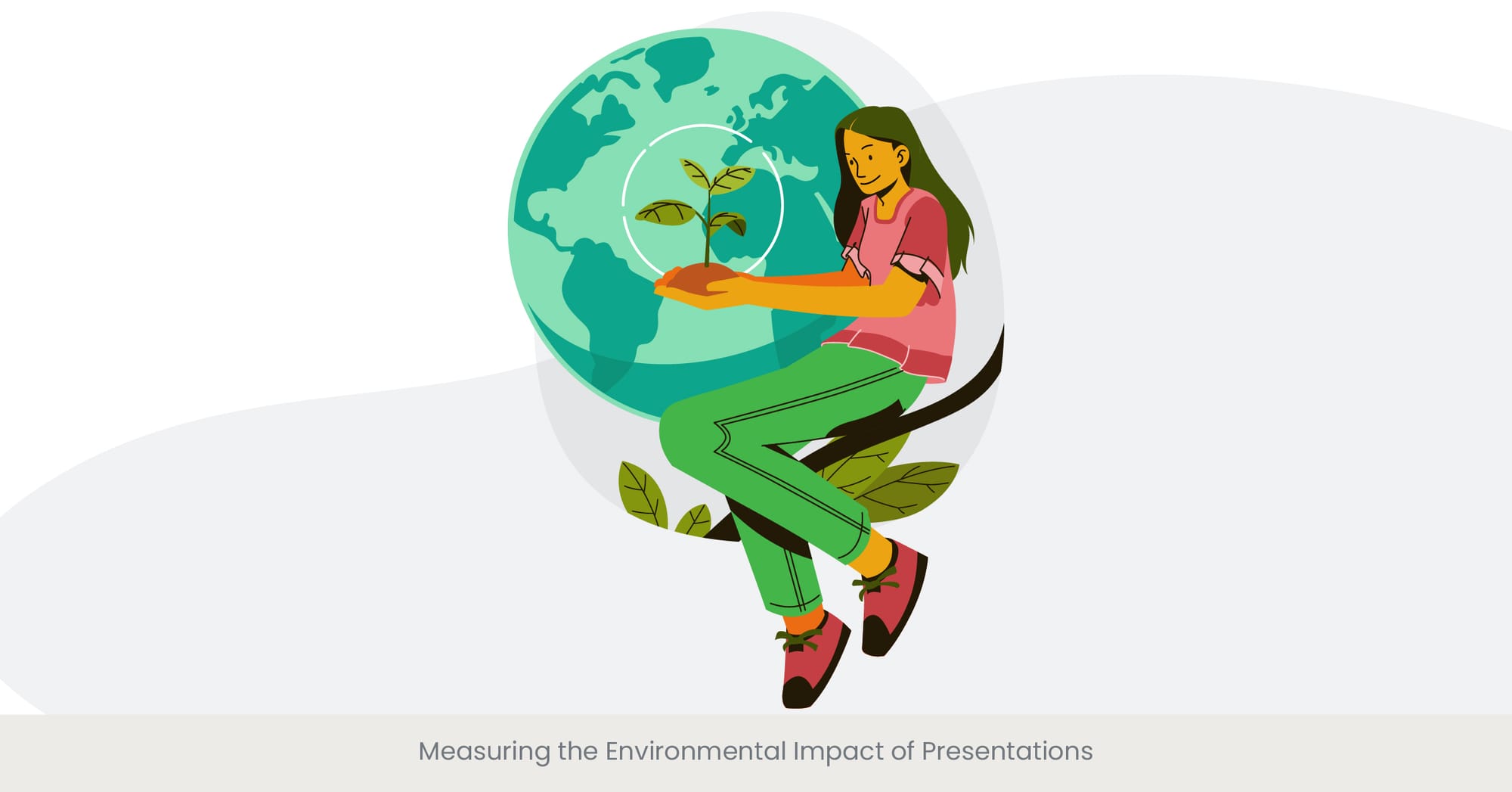
Evaluating the Environmental Impact of Presentations
Measuring the environmental impact of presentations is essential for businesses that prioritize sustainability. By assessing factors like energy consumption, carbon emissions, and waste generation, companies can make presentations more eco-friendly. Implementing sustainable practices not only reduces environmental harm but also improves the company’s reputation. For example, using product presentation structure templates can minimize physical waste, and adopting digital alternatives aligns with visual communication in product demos.
Understanding Environmental Impact Metrics
Environmental impact metrics, such as carbon footprint and energy consumption, provide a foundation for understanding how sustainable a presentation is. Tools like carbon calculators help measure these metrics, allowing businesses to adopt greener practices in presentation coaching for sales. By using these metrics, companies can identify areas for improvement, ensuring they align with broader environmental goals.
Real-World Examples and Applications
Google’s I/O developer conference and TED events are examples of large gatherings that measure their environmental impact. By assessing the carbon footprint and energy use, these organizations implement strategies to minimize their environmental footprint. They also emphasize using engaging product presentation scripts and public speaking tips for product demos to communicate their sustainability efforts.
Research and References Supporting Environmental Impact Measurement
The Carbon Trust reports that measuring environmental impact can lead to a 20% reduction in carbon emissions through targeted interventions. The International Organization for Standardization (ISO) found that organizations that regularly evaluate their environmental performance can improve sustainability by up to 30%. These studies show the value of incorporating presentation coaching for sales with a focus on sustainability, emphasizing the importance of reducing environmental harm during presentations.
Watch INK PPT's YouTube tutorials on green presentation design.
After discussing the importance of measuring the environmental impact of presentations, offer readers a direct link to tutorials that provide step-by-step instructions for reducing waste in their presentation design.
Frequently Asked Questions
1. How to present a product design case study?
To present a product design case study effectively, start with an introduction that outlines the product designer project's objectives and scope. Use a structured approach to detail the design process, including research, ideation, prototyping, and testing. Highlight key challenges and how they were overcome, and use visuals such as sketches, prototypes, and final designs to illustrate your points. Conclude with the results and impact of the design, emphasizing lessons learned and future steps.
2. How do you present a case study design?
Presenting a case study design involves a clear and logical structure. Begin with a brief overview of the case study, including the problem statement and goals. Describe the methodology used to address the problem, and present the findings with supporting data and visuals. Discuss the implications of the results and how they contribute to the field. Conclude with a summary of key insights and recommendations for further research or application.
3. How to structure a product case study?
A well-structured product case study should include the following sections: introduction, background, methodology, findings, and conclusion. The introduction should provide an overview of the product and the objectives of the case study. The background section should include relevant context and information about the product's development. The methodology should detail the research and testing processes used. The findings section should present the results, supported by data and visuals. The conclusion should summarize the key insights and implications for future work.
4. How long should a product design case study be?
The length of a product design case study can vary, but it should be concise yet comprehensive. Typically, writing a case study ranges from 1,500 to 3,000 words, depending on the complexity of the whole design project. The key is to provide enough detail to convey the process, findings, and impact without overwhelming the reader. Use visuals and bullet points to enhance readability and highlight important information.
5. How to build an eco-friendly PPT presentation?
To build an eco-friendly PPT presentation, use digital tools and avoid printing slides. Opt for clean, minimalist designs bright colors that reduce energy consumption on display devices. Use eco-friendly fonts and colors that are easier on screens. Incorporate content that promotes sustainability, such as highlighting eco-friendly practices and products. Ensure your presentation is accessible online to minimize the need for physical distribution.
6. How do you implement eco-friendly practices?
Implementing eco-friendly practices involves adopting strategies that minimize environmental impact. This can include reducing waste, conserving energy, using sustainable materials, and promoting recycling. In the context of presentations, use digital formats instead of printed materials, choose energy-efficient devices, and highlight sustainability initiatives in your content. Engage with suppliers and partners who prioritize environmental responsibility.
7. How to incorporate sustainability into events?
Incorporating sustainability into events involves several key practices. Use digital invitations and registration to reduce paper waste. Choose venues that prioritize energy efficiency and have eco-friendly certifications. Provide recycling bins and use compostable or reusable materials for catering. Encourage attendees to use public transportation or carpool. Highlight sustainability initiatives and educate attendees on eco-friendly practices.
8. How can event organizers encourage environmentally friendly practices among participants and stakeholders?
Event organizers can encourage environmentally friendly practices by setting clear sustainability goals and communicating them to participants and stakeholders. Provide resources and guidelines on how attendees can minimize their environmental impact. Offer incentives for eco-friendly behaviors, such as discounts for using public transportation. Highlight and reward sustainable practices through recognition and awards. Use the event platform to educate and raise awareness about the importance of environmental responsibility.
9. How to present a product to a customer?
To present a product to a customer effectively, start with a clear understanding of their needs and pain points. Begin the presentation with writing an engaging introduction that captures their attention. Demonstrate the product's key features and benefits, using visuals and live demonstrations. Provide real-world examples or case studies that illustrate the product's value. Conclude with a strong call to action, with feedback and encouraging the customer to take the next step, such as making a purchase or scheduling a follow-up meeting.
10. How do you introduce a product in a presentation?
Introducing a product in a presentation involves a few key steps. Begin with an engaging hook that grabs the audience's attention. Provide a brief overview of the product, including its purpose and unique selling points. Demonstrate how the product solves a specific problem or meets a particular need. Use visuals and examples to illustrate the product's features and benefits. Conclude with a call to action, inviting the audience to learn more, try the product, or make a purchase.

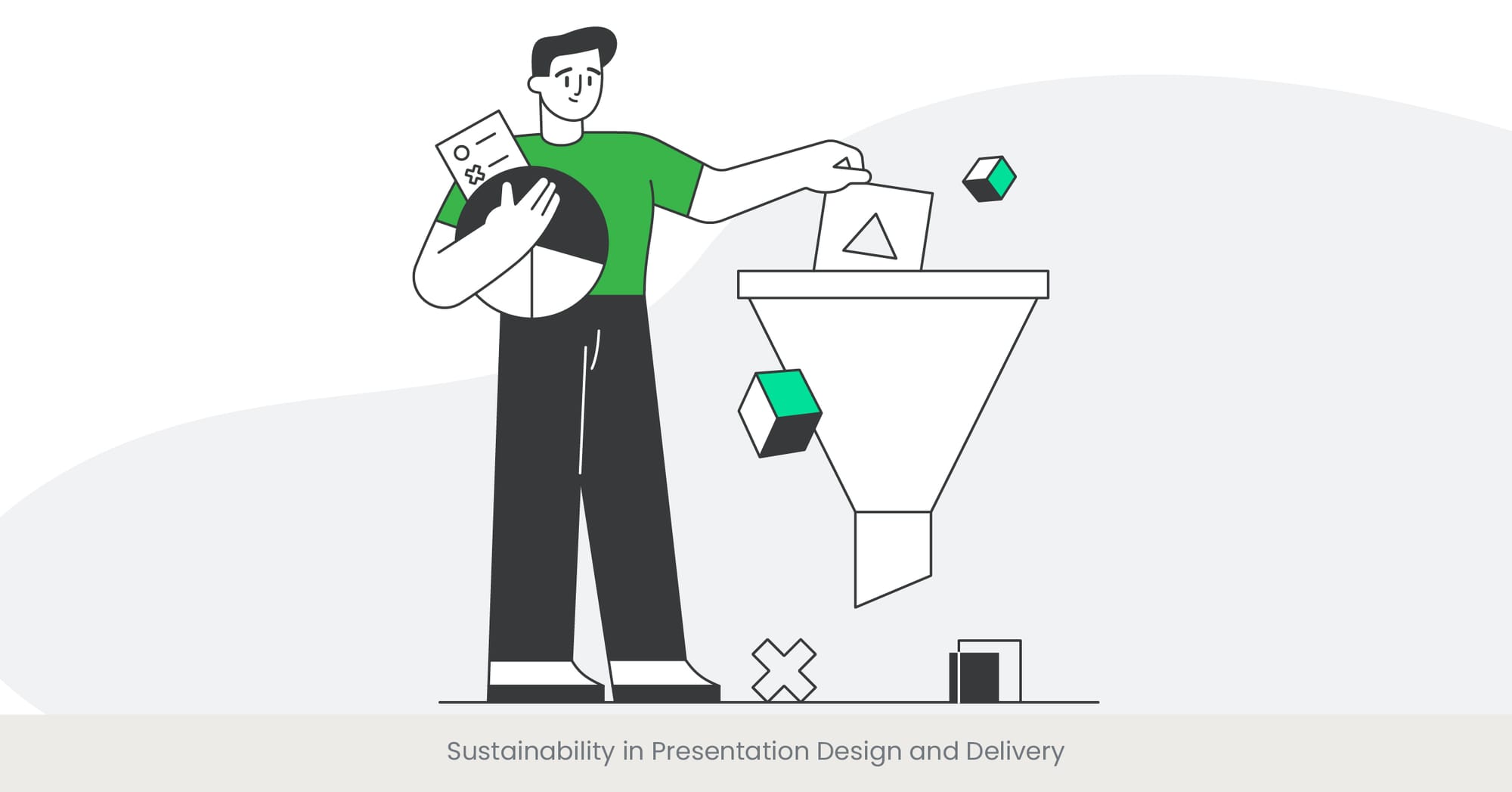

%20(1).jpg)
%20(1).jpg)

